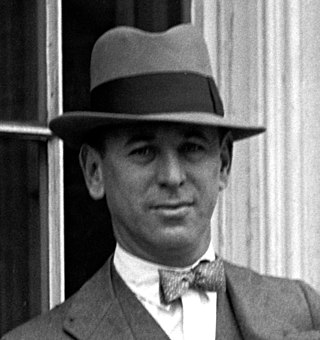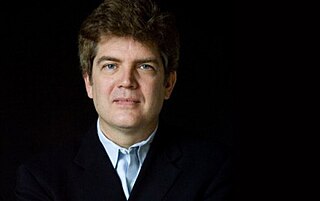Steven M. Johnson | |
|---|---|
| Born | May 12, 1938 |
| Alma mater | University of California, Berkeley |
Steven Maxwell Johnson (born May 12, 1938) is an American cartoonist, futurist, and inventor.
Steven M. Johnson | |
|---|---|
| Born | May 12, 1938 |
| Alma mater | University of California, Berkeley |
Steven Maxwell Johnson (born May 12, 1938) is an American cartoonist, futurist, and inventor.
Steven Maxwell Johnson was born in 1938. He grew up in the San Francisco Bay Area. He attended Yale for two years, then earned his BA from the University of California, Berkeley. [1]
His family were book publishers. His father, Paul C. Johnson, edited the Western Garden Book for Sunset Books. Steve Johnson’s maternal grandfather was Herbert E. Bolton, chairman of History at the University of California, Berkeley, and Director of its Bancroft Library. Bolton either began, or fell for, the hoax that the “plate of brass” found in 1933 was left by Sir Francis Drake in 1579. The plate was later exposed to be a prank of E Clampus Vitus, including scholars who knew Bolton well.
Johnson was a city planner in the 1960s and 1970s. Johnson helped plan suburbs. [2]
In 1973, the Sierra Club Bulletin hired him to be their editorial cartoonist. The next year he was assigned to create 16 future RVs in cartoons. He created 109 RV designs. This was the start of his artistic career and created his interest in inventing. [3] [4]
The Sacramento Bee hired him as an artist in 1978. [5] He anticipated factory-torn clothes in 1975, the Roomba and video camera helmets in 1991, Google Glass in 1992, and hands-free telephones. His inventions were often given names using puns. The art had deadpan captions. Unlike some of his inventions, factory-scratched cars, shoes with headlights and turn-signals, and quickie add-a-rooms for houses have not yet been made real. [3] [1] [6] [7] [4] [8] [5] [2]
Sierra[ clarification needed ] and Sacramento Bee illustrations filled Johnson’s first two books, What the World Needs Now and Public Therapy Buses. Impressed by those, Honda Motor Co. hired him in 1994 to analyze future trends. He retired in 2005. Johnson published anthologies of cartoon inventions almost every year in the 2010s to sell at Maker Faires, and art, cartoon, and regional events. [5] [2]
He lives in Carmichael, California, with his wife and son. [1] [4]

Reuben Garrett Lucius Goldberg, better known as Rube Goldberg, was an American cartoonist, sculptor, author, engineer, and inventor.

Raymond Kurzweil is an American computer scientist, author, entrepreneur, futurist, and inventor. He is involved in fields such as optical character recognition (OCR), text-to-speech synthesis, speech recognition technology and electronic keyboard instruments. He has written books on health technology, artificial intelligence (AI), transhumanism, the technological singularity, and futurism. Kurzweil is a public advocate for the futurist and transhumanist movements and gives public talks to share his optimistic outlook on life extension technologies and the future of nanotechnology, robotics, and biotechnology.

Carl William Stalling was an American composer, voice actor and arranger for music in animated films. He is most closely associated with the Looney Tunes and Merrie Melodies shorts produced by Warner Bros., where he averaged one complete score each week, for 22 years.

A Rube Goldberg machine, named after American cartoonist Rube Goldberg, is a chain reaction–type machine or contraption intentionally designed to perform a simple task in an indirect and (impractically) overly complicated way. Usually, these machines consist of a series of simple unrelated devices; the action of each triggers the initiation of the next, eventually resulting in achieving a stated goal.

Herbert Lawrence Block, commonly known as Herblock, was an American editorial cartoonist and author best known for his commentaries on national domestic and foreign policy.

Donald Arthur Glaser was an American physicist, neurobiologist, and the winner of the 1960 Nobel Prize in Physics for his invention of the bubble chamber used in subatomic particle physics.

The Great Seal of the State of California was adopted at the California state Constitutional Convention of 1849 and has undergone minor design changes since then, the last being the standardization of the seal in 1937. The seal shows Athena in Greek mythology, the goddess of wisdom and war, because she was born an adult, and California was never a territory; a California grizzly bear, the official state animal, feeding on grape vines, representing California's wine production; a sheaf of grain, representing agriculture; a miner, representing the California Gold Rush and the mining industry; and sailing ships, representing the state's economic power. The word Eureka, meaning "I have found it", is the California state motto.

John Robinson Pierce, was an American engineer and author. He did extensive work concerning radio communication, microwave technology, computer music, psychoacoustics, and science fiction. Additionally to his professional career he wrote science fiction for many years using the names John Pierce, John R. Pierce, and J. J. Coupling. Born in Des Moines, Iowa, he earned his PhD from Caltech, and died in Sunnyvale, California, from complications of Parkinson's Disease.

Drake's Plate of Brass is a forgery that purports to be the brass plaque that Francis Drake posted while anchored in Drake's Bay in Northern California in 1579. The hoax was successful for 40 years, despite early doubts. After the plate came to public attention in 1936, historians raised questions regarding the plate's wording, spelling, and manufacture. The hoax's perpetrators attempted to apprise the plate's finders as to its origins. Many presumed the plate to be authentic after an early metallurgical study concluded it was genuine. In the late 1970s, scientists determined that the plate was a modern creation after it failed a battery of physical and chemical tests. Much of the mystery surrounding the plate continued until 2003, when historians advanced a theory about who created the plate and why, showing the plate to be a practical joke by local historians gone awry. The plate was acquired by and is often on display at the Bancroft Library of the University of California, Berkeley.

A fire sprinkler or sprinkler head is the component of a fire sprinkler system that discharges water when the effects of a fire have been detected, such as when a predetermined temperature has been exceeded. Fire sprinklers are extensively used worldwide, with over 40 million sprinkler heads fitted each year. In buildings protected by properly designed and maintained fire sprinklers, over 99% of fires were controlled by fire sprinklers alone.
Reynold B. Johnson was an American inventor and computer pioneer. A long-time employee of IBM, Johnson is said to be the "father" of the hard disk drive. Other inventions include automatic test scoring equipment and the videocassette tape.

The history of photography began with the discovery of two critical principles: The first is camera obscura image projection; the second is the discovery that some substances are visibly altered by exposure to light. There are no artifacts or descriptions that indicate any attempt to capture images with light sensitive materials prior to the 18th century.

Jack Ohman is an American editorial cartoonist and educator. He is currently a contributing opinion columnist and cartoonist for the San Francisco Chronicle. He formerly worked for The Sacramento Bee and The Oregonian. His work is syndicated nationwide to over 300 newspapers by Tribune Media Services. In 2016, he was awarded the Pulitzer Prize for Editorial Cartooning.
Rex Babin was an American editorial cartoonist. He worked for The Denver Post from 1988 to 1989; the Times Union; and The Sacramento Bee from 1999 to 2012.
Upstate New York has been the setting for inventions and businesses of international significance. The abundance of water power and the advent of canal and rail transportation provided nineteenth century upstate New York entrepreneurs with the means to power factories and send their products to market. In the twentieth century, hydroelectric power and the New York State Thruway served the same roles. In April 2021, GlobalFoundries, a company specializing in the semiconductor industry, moved its headquarters from Silicon Valley, California to its most advanced semiconductor-chip manufacturing facility in Saratoga County, New York near a section of the Adirondack Northway, in Malta, New York.

The United States provided many inventions in the time from the Colonial Period to the Gilded Age, which were achieved by inventors who were either native-born or naturalized citizens of the United States. Copyright protection secures a person's right to his or her first-to-invent claim of the original invention in question, highlighted in Article I, Section 8, Clause 8 of the United States Constitution, which gives the following enumerated power to the United States Congress:
To promote the Progress of Science and useful Arts, by securing for limited Times to Authors and Inventors the exclusive Right to their respective Writings and Discoveries.

A timeline of United States inventions (1890–1945) encompasses the innovative advancements of the United States within a historical context, dating from the Progressive Era to the end of World War II, which have been achieved by inventors who are either native-born or naturalized citizens of the United States. Copyright protection secures a person's right to the first-to-invent claim of the original invention in question, highlighted in Article I, Section 8, Clause 8 of the United States Constitution which gives the following enumerated power to the United States Congress:
To promote the Progress of Science and useful Arts, by securing for limited Times to Authors and Inventors the exclusive Right to their respective Writings and Discoveries.

"Stimpy's Invention" is the twelfth episode and series finale of the first season of The Ren & Stimpy Show. It originally aired on Nickelodeon in the United States on February 23, 1992.
Clifford Michael Surko is an American physicist, whose works involve plasma physics, atomic physics, nonlinear dynamics and solid state physics. Together with his colleagues, he developed techniques for laser scattering at small angles to study waves and turbulence in tokamak plasmas and invented a positron trap that was used in experiments worldwide to study antimatter. Surko also developed other techniques for studying positron plasmas and examined atomic and plasma physics with positrons.
Eddy Goldfarb is an American toy inventor. The creator of over 800 toys, he is best known for inventing Yakity Yak Talking Teeth, Battling Tops, KerPlunk, Stompers, and Vac-U-Form. He is the subject of the award-winning short film Eddy's World.